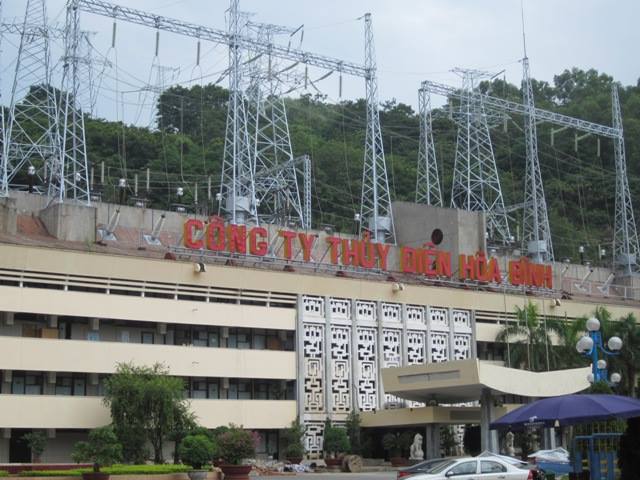In Vietnam, hydroelectric power still plays an important part in energy mix, accounting for about 40% of total capacity of the entire system. Therefore, ensuring power supply for socio-economic development will encounter a lot of obstacles as drought and impact of El Nino will severely affect hydropower reservoirs. To solve this problem, Vietnam Electricity (EVN) has implemented ample activities in construction investment management and power system operation since the end of 2015.
According to statistics from National Load Dispatch Center (A0), due to impact of climate, reservoirs are in shortage of almost 6.5 billion m3 by January 1st 2016. In particular, Northern area, Central area and Southern area are facing the shortfall of 2.5 billion m3, 2.1 billion m3 and 2.1 billion m3 respectively. Notably, the water level in many reservoirs is currently lower than the normal level. According to EVN, this situation will cause the deficiency of 3.22 billion KWh. Meanwhile, according to calculations of EVN, electricity demand is expected to reach 159,4 billion KWh. Produced power is about to rise to 12.08%, and imported power will go up to 182.6 billion KWh respectively.

Hoa Binh Hydropower plant
While reservoirs are facing water crisis, water level in rivers and streams also keeps going down, National Center for Hydro - Meteorological Forecasting said. Especially in Northern Vietnam, water level has decreased since October 2015. In particular,water level at basin of Black River, Thao River, Clear River and Red River has lowered by 5-30%, 10-45%, 5-20% and 40-45% respectively.
It can be seen ensuring power supply for socio-economic development is very challenging. The situation has become more and more difficult as EVN has directed to discharge billions m3 of water for irrigation.
EVN Deputy General Director, Mr. Ngo Son Hai said as hydropower still accounts for a large part of energy mix, balancing between supply and demand depends significantly on hydrological developments. Therefore, owing to unfavorable weather leading to water shortage, power sector is facing big challenge. In fact, in the end of 2015 and early 2016, the shortage has reduced production capacity and output at hydropower plants. In 2015, their production has decreased to 55.3 billion KWh from 59.8 billion KWh of 2014.
Mr. Hai said EVN has directed agencies to closely monitor changes in weather, climate, hydrology, water flows to store as much water as possible for coming dry season. The company also mobilize thermal power sources right from the end of 2015 so power plants’ reservoirs can more water, especially ones in Center and Highland areas.
Moreover, EVN has proposed centralized monitoring from National Load Dispatch Center to Ministry of Industry and Trade to identify to store as much water as possible. Especially, EVN will coordinate closely with Ministry of Agriculture and Rural Development, Water Resources Directorate, local authorities, hydropower companies etc. to establish manage the use of water efficiently.
Especially, to balance power supply and demand in Northern, Central and Southern areas, EVN has required its agencies to boost progress of key projects such as 500KV substation Pleiku 2, 220KV power lines and so on. National Power Transmission Corporation and power companies will improve the grid, ensuring power supply, prepare materials to handle problem quickly. Additionally, EVN has assigned power-saving target to its power companies and required them to foster propagation activities via public media to raise people’s awareness of energy efficiency.
According to Mr. Hai, despite EVN’s effort, power sector alone is not enough to achieve fruitful results. The sector needs support from ministries, departments, corporations and citizens to overcome the water crisis.
Ban Mai
